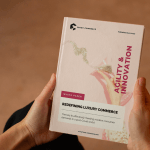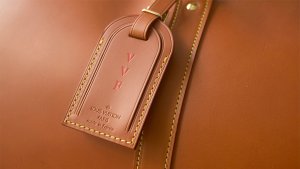Creating a luxury experience is all about delivering an exceptional and exclusive level of service to your customers. It requires a combination of personalization and strong branding to truly stand out in today’s competitive market. Personalization involves tailoring the customer experience to the individual, while strong branding helps to establish a unique identity and create a sense of exclusivity. In this article, we will explore how these two elements can be used to create a truly luxurious experience that leaves a lasting impression on your customers.
Personalization in Luxury
Personalization is an essential part of luxury retail. Personalizing the shopping experience keeps customers engaged, turning positive interactions into a company’s success. Traditionally all of the experience was in person but with new demographic preferences and pressures from covid, times are changing.
Brands like Gucci are devising new ways to keep a personal relationship with customers even as they shop at home. They are implementing call centers to optimize the remote customer’s experience. The call centers are staffed with knowledgeable shop assistants, available to answer questions and establish relationships with shoppers. Through phone, email, or live chat, an assistant can help a buyer create wishlists, make orders, and schedule deliveries. The goal is to give customers browsing the online catalog the same personalized attention as an in-store customer.
Sephora has created a truly omnichannel experience for its customers. Their mobile app is an “in-store companion” enabling users to find products in their local store and book a reservation. If they have their makeup done in stores stylists can input the products used in the customer profile. They can also virtually try on products and receive recommendations. This is a highly flexible and personalized experience that creates and rewards loyal customers.
Other ways luxury retailers are utilizing e-commerce:
- Blockchain
Blockchain is mostly used to record cryptocurrency transactions but is a great tool for companies dealing with sensitive data. It’s an extremely secure ledger, which is essential to retailers whose goods are valued by authenticity. It increases traceability and prevents fraud by authenticating products.
- NFTs
Luxury brands have begun to dabble in the world of Non-fungible tokens, sold alongside physical goods and as standalone products. Luxury brands can offer exclusive access to upcoming NFTs for select customers to generate interest.
- MetaVerse
Utilizing the metaverse is still a fairly new concept for luxury brands. Retailers seek to use augmented reality to enhance their customer’s experience in person and online.
- Social Apps
Gucci and other brands have jumped on the social app bandwagon, offering exclusive Snapchat filters and using WeChat as a tool.
- Hybrid Shopping
Stores like Channel have created an immersive brand experience that is a hybrid of digital and in-person. An app used in-store provided product information, application tips, and wish list options. Other stores put QR codes on their tags, giving members access to exclusive content. The buyer’s cell phone becomes a personal handheld assistant and a magic key to unlocking an exclusive virtual experience.

Creating a Brand-worthy Customer Experience
Luxury brands are expected to offer first-class experiences no matter the company or digital interface. Affluent consumers want to feel the exclusivity of the brand, with private viewings, personal shoppers, targeted recommendations, personalized treatments, and recognition across all channels.
Luxury consumers look for a unique experience with each brand but they also must have a usable interface. When creating a beautiful custom storefront, it’s important to remember that the customer’s need prevails over art. Service design uses a creative and collaborative approach to making a delightful client encounter while still being functional.
On top of the aforementioned personalization, here are a few more elements that are key when creating a brand-worthy customer experience:
- Provide excellent customer service: This can include things like fast and efficient resolution of customer issues, knowledgeable staff, and a convenient and easy-to-use website or app.
- Create a seamless omnichannel experience: Luxury consumers expect a consistent and seamless experience across all channels, including in-store, online, and through mobile apps. This means having a cohesive brand identity and making sure all customer touchpoints are consistent and aligned.
- Foster a sense of community: Luxury consumers often want to feel like they are part of an exclusive community, so consider creating loyalty programs or online communities where customers can engage with each other and the brand.
- Offer exclusivity: Luxury consumers are often looking for unique and exclusive experiences, so consider offering limited edition products or exclusive events or experiences to make them feel special.

Did you know M-Commerce will be dominating in the coming years?
Branding Ready for the Future
Luxury retail is moving fast and the only way to keep up is with an agile business that’s technically ready to adapt at scale. Changing and adapting to your demographic is important for a brand’s longevity. Undertaking digital transformation now will prepare you for the obstacles of tomorrow. With a majority of online sales moving to mobile, it’s time to get ready.
A modern commerce architecture helps a brand stand out from its competitors with an improved retail experience. Until recently, companies had to completely overhaul their systems every three years. With a headless commerce approach, the technical barriers to digital transformation are removed. Creating an omnichannel experience via a performant, flexible and future-ready platform is now accessible.
To help negate the challenges of building an ergonomic e-commerce experience, Front-Commerce builds a full-featured PWA theme, that is later 100% customizable. This becomes a great stepping stone, combining current and future industry standards to create a tailored fit so retailers & merchants can focus on defining their brand experience.
Progressively migrating an e-commerce platform also has a clear positive financial impact, improving long-term costs and margin optimization. Integrating services and features seamlessly into the creative design, and managing them independently, means developers spend 15% less time on frontend tasks. Product, design, and marketing teams also work better together in tandem rather than waiting around on each other.
In a consumer-centric market, a personalized experience that goes over and above the purchase history is paramount. With a tailor-made digital storefront and a headless architecture, you can provide engaging & valuable content from different sources, creating a custom digital experience that meets your buyer’s needs and gives them the brand experience they are looking for.
Put your customer at the forefront of your business. Empower your teams to deliver an authentic brand experience in a digital context with the tools they need.

